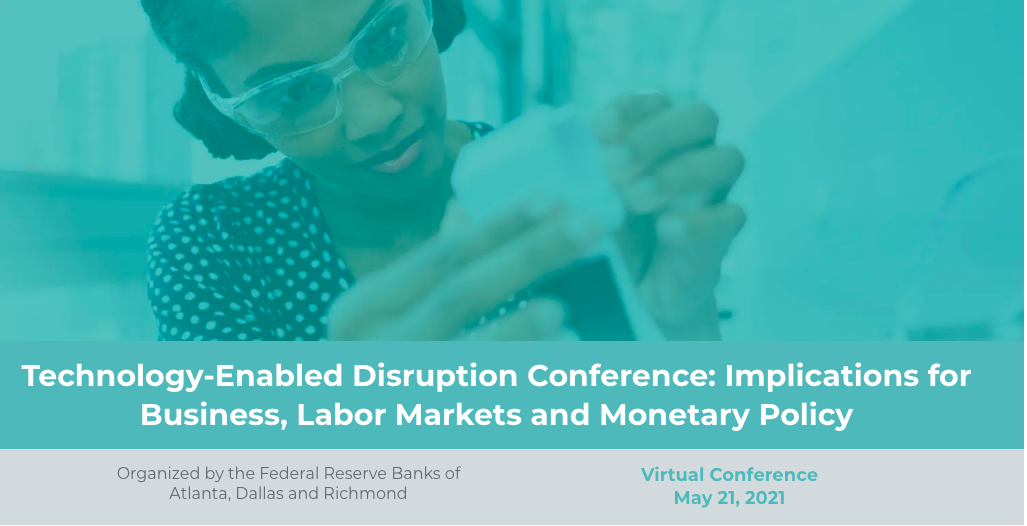
- This event has passed.
Technology-Enabled Disruption: Implications for Business, Labor Markets and Monetary Policy
May 21, 2021 @ 8:00 am - 4:00 pm

This conference is designed to provide a better understanding of the phenomenon of technology-enabled disruption and explore its implications for the broader economy—in particular, labor markets and the workforce.
Technology-enabled disruption means that workers are increasingly being replaced by technology. It also means that existing business models are being supplanted by new models, often technology-enabled, that bring more efficiency to the sale or distribution of goods and services. As part of this phenomenon, consumers are increasingly able to use technology to shop for goods and services at lower prices with greater convenience—which has the impact of reducing the pricing power of businesses. This reduced pricing power, in turn, causes businesses to further intensify their focus on creating greater operational efficiencies. These trends appear to be accelerating.
It is likely that disruption is becoming a greater factor in the economic outcomes of workers. Increasingly, workers with lower levels of educational attainment are seeing their jobs restructured or eliminated. Unless they have sufficient math and literacy skills, or are retrained, these workers may see their productivity and incomes decline as a result of disruption. Thus, disruption may help explain the muted wage gains and overall labor productivity growth we have seen in the U.S. as well as in other advanced economies during much of the recovery from the global financial crisis.
Technology-enabled disruption’s impact on the workforce is likely not susceptible to monetary policy—it requires structural reforms. The reforms could include improving early-childhood literacy and overall college readiness in order to increase the percentage of students who graduate from college in six years or less (a share now estimated at 59 percent in the U.S.). The reforms could also include stepped-up efforts to increase middle-skills training in cities across the U.S. in order to increase employment, close the skills gap (not enough workers to fill skilled jobs) and raise worker productivity.
It is also likely that disruption is a factor behind some business decisions made by companies that are facing one or more disruptive competitors. These companies may be more cautious about making capacity-expansion decisions and investing in major capital projects.
To deal with disruptive changes and lack of pricing power, many companies are seeking greater economies of scale in order to maintain or improve profit margins. This may help explain the record merger-and-acquisition activity globally over the past few years.